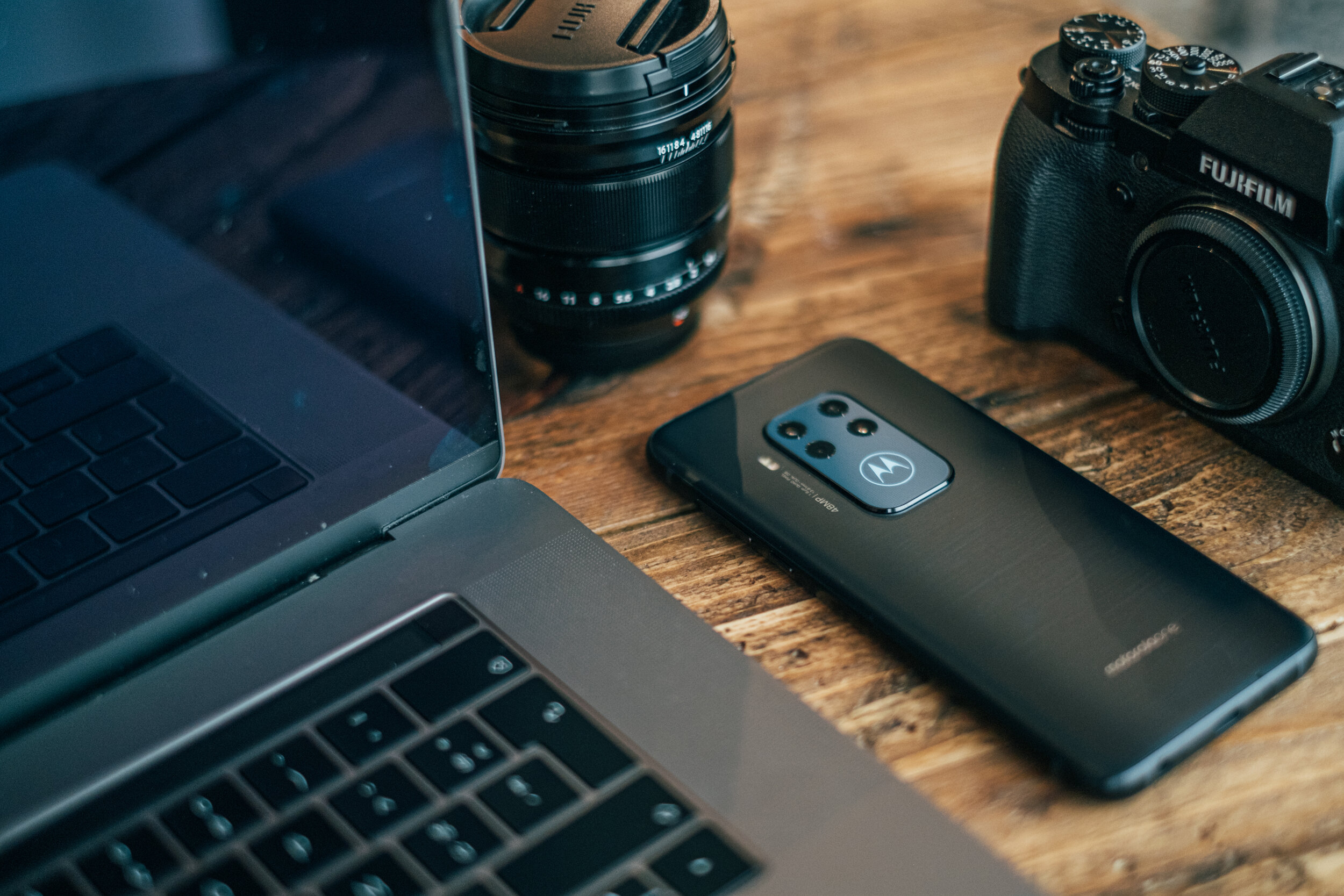How to shoot professional video from home
What are you going to film?
OK , so before we dive into the technical aspects, you need to have a plan for what you’re going to film. The easiest thing will be a PTC (piece to camera) by you recorded to your phone or PC.
What’s the message/idea/advice you want to share and why?
Who are your audience?
What do you want your audience to think, feel or do after watching it?
How long does this video need to be?
Is this part of a series, will the content be linked in anyway?
Where will it be shared?
Then think of something visually creative related to your subject such as a video/photo montage, slides, stop motion, re-edited webinar/presentations, dynamic text animation etc. The only limit here is your creativity!
What camera should you use?
Go with the best quality camera you have or can afford.
Most of you will have webcams so in the first instance this is probably the easiest but the video quality is generally poor and you have little to no control over the image quality.
Next best thing is your mobile phone and even better a DSLR camera. Most smartphones and DSLRs allow you to connect to your PC monitor through a USB or HDMI connection turning them into a high quality PC webcam. Remember, always use a tripod or makeshift mount to keep the camera steady when using a mobile or DSLR.
Here’s a list of some affordable camera options if you’re looking to invest in your video set-up.
How to frame a shot
Clean up your background
Homes and offices can get full of stuff, so don’t distract your audience with clutter in the frame, a quick cleanup will do wonders. Most phone cameras have a “Bokeh” effect which softens the background so check this is enabled. If you want to create a permanent space for your solo videos, consider choosing a space where you can control the light and setup. That way, you’ll have a consistent look throughout all of your videos.
Adjust your framing
For interviews and PTCs, position yourself about an arm’s length away from the screen, centered in the frame and leave a little headroom from the top of your head to the top of the frame. If using a smartphone ensure you frame the shot in landscape mode not portrait and don’t forget to raise your camera to your eyeline, as no one wants to see up your nose!
How to use light
Use natural light where possible
Natural light is a beautiful thing and it’s free. Use it to your advantage.
If you have a natural light source near you (like a window), always keep it in front of you, not behind you. If you don’t have a window, or if you’re shooting at night, don’t just rely on the overhead lights in your home. Use an LED video light or if you happen to have an external monitor, place it behind your camera with a solid white background displayed on the screen.
If shooting in the park or in your garden, avoid direct noon sunlight, as it will look very harsh on your face. If the sun is out, try shade, early morning or evening for a warm golden light.
Always check your shot
Most cameras have autofocus and all modern mobile phone cameras have face detection autofocus. This is the tech that allows the camera to focus on your face while you move closer and farther away. This is one feature that’ll make it easy to shoot videos all by yourself. Play around with your focus till you know it’s sharp. If you’re shooting by yourself, it’s essential to monitor the footage so you know you’re in frame and focused.
When in selfie mode, phones allow you to see the footage by using the front camera and most DSLRs allow you to output to a standard PC monitor via a HDMI cable.
Finally, always shoot on the highest video quality setting. This will usually be 1080p or 4k at 25fps or 30fps.
How to record clean, clear audio
Go with the best quality mic you have or can afford.
Crisp, clean audio matters as much as the image quality of your video. So ensure you have a good mic set-up, no background noise and the mic is close (at least 12 inches close) to whomever is speaking.
The are many mic options available. If you have a choice, avoid going with just the “built in” option, whether you're using a web-cam, phone or DSLR. Better mic options include: wireless earbuds with a mic attached, shotgun mic attached to DSLR, wireless lavalier or a desktop condenser mic.
Always monitor your sound by wearing headphones and playback some practice audio to check for quality.
Use the right words, tone and body language
It's not just the message but how you come across that matters. This is true for both PTC’s and interviews.
There’s likely no director and you’re the only person in the room, so in order to avoid sounding flat on camera you need to get in the zone. Try listening to your favorite track, take a lap around the garden, or if all else fails, just shake it out and get loose. Be natural, be authentic, smile and be the best version of yourself. Have your talking points nearby, but not visible and break them down to sizeable chunks. Always illustrate to your audience why something is important to you and to them.
Finally, don’t let the camera just roll from line to line. Do a few takes in a row, stop and review. This will help immensely when you’re knee-deep in the editing process.
Recording interviews via video call
During lockdown, you’re likely doing video calls with people in your network. However, recording the video calls needs a little more finessing. Nowadays, most video conferencing software has a record function built in: Zoom, Microsoft Teams, Google Hangouts (G Suite Enterprise), GoToMeeting, Skype etc.
If your video conferencing software doesn’t have this feature you’ll need a third party video recorder. Third party apps also give you more control over the quality of the video and your camera/mic settings. Mac users can use the Quicktime app which is already built into MacOS.
Remember, always check your interviewee’s set-up on their end, so you can anticipate any problems beforehand. If they have a poor quality set-up consider getting them to wear headphones and help them frame their shot. Ensure you both have sufficient internet speeds (min 2 Mbps) and a wired connection (not wireless) when recording calls. Finally, for extra piece of mind record the video call at both ends i.e. get your interviewee to record the interview at the same time as you and have them send you the video file.
Editing it all together
Find an editing package that works for you
There are lots of free or low cost editing apps out there for Windows and Mac. Find one that works for you and is optimised for social media and mobile content. Your smartphones/tablet may also have a built in basic video editing package, so test this first.
Design for sound off
Most social media videos are played with no sound. So include descriptive images, explanatory infographics and captions. The main video platforms - Youtube, Vimeo, LinkedIn, Facebook allow uploading of separate caption files such as .srt, .sbv etc which enable captions to be turned on and off. This is especially handy for people who are hard of hearing or non-native English speakers. Here’s a handy guide on creating captions for your videos.
Music
If using background music in your edit, choose music that’s appropriate for your subject and that doesn’t overpower the voice-over. Music should always enhance, never distract. Here are two lists for music downloads - stock music (paid) and stock music (free).
We’ve written more about music this blog post.
Stay healthy, stay safe and look after each other.
If you’d like more advice on filming from home or outdoors during the lockdown, please get in touch.








